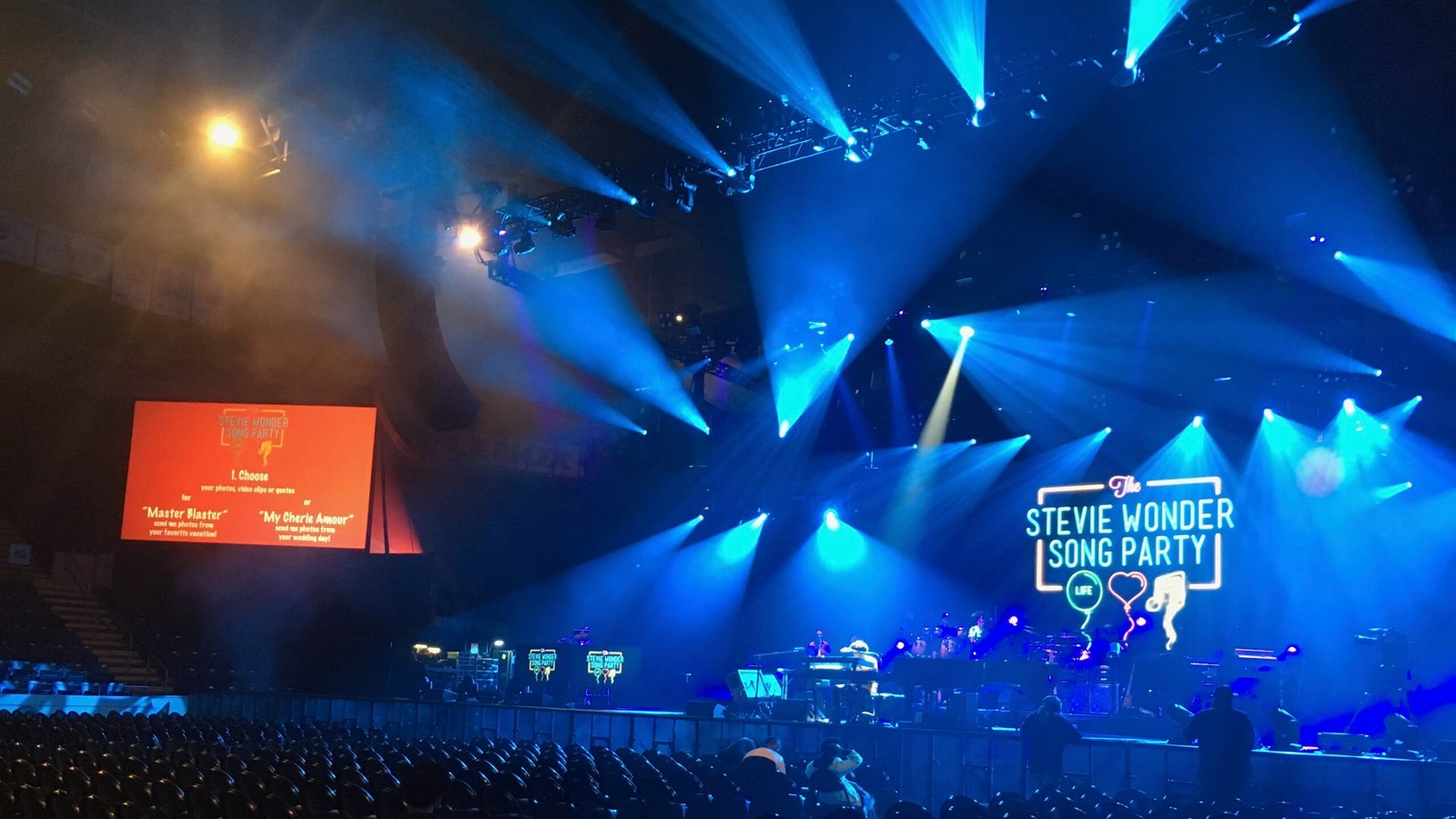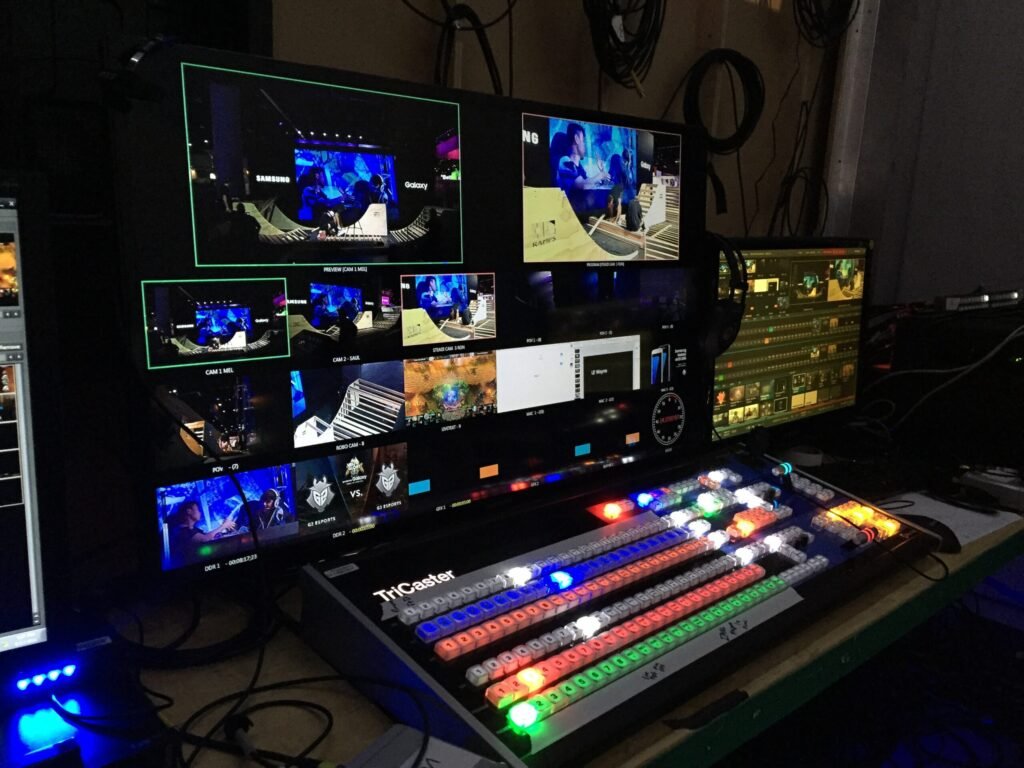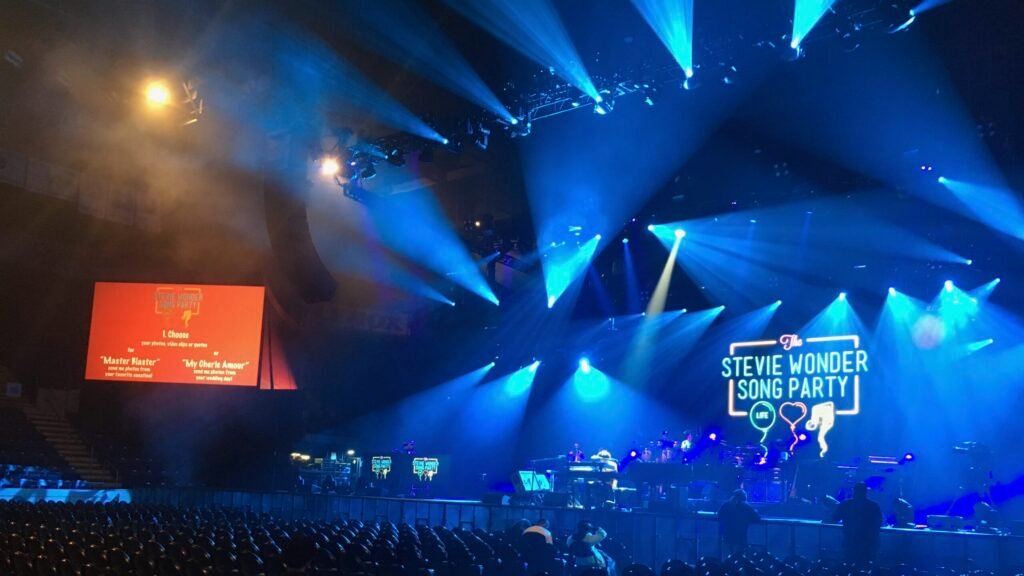The New Stagecraft: How Music, Immersive Tech, and AI Are Redefining Audience Engagement

Stevie Wonder Song Party
Vegas and East Coast Tour
The relationship between performer and audience is undergoing its most profound shift in a generation. The old model of passive consumption is dissolving, replaced by a dynamic, data-driven conversation. Today, artists and brands are crafting experiences that don’t just happen in front of an audience, but with them and through them.
This is the new stagecraft: a powerful convergence of music, immersive technology, and artificial intelligence that turns every spectator into a participant, a data point, and a core visual element of the performance itself. The result is a feedback loop where the crowd fuels the show, and the show forces the crowd to see itself in a new light.
1. The Experiment: Facial Recognition on the Main Stage
Massive Attack’s recent festival performances provide a vivid illustration of this trend. Onstage cameras captured the faces of attendees, feeding the video into a real-time facial-recognition engine. The system then projected matched faces—sometimes with an AI-guessed occupation or “profile”—onto the massive LED backdrop behind the band.
The band did not ask for consent; the data appeared instantly, turning the audience into a moving billboard of biometric information. The visual impact is striking, working on two distinct levels:
The Technology’s Action: A face is identified, and a label is generated on the fly.
The Technology’s Action: The LED wall reacts to the music, with face-tags and data-bubbles pulsing in sync with the beat.
The Audience’s Feeling: Surprise and discomfort. You recognize your own face, but now it’s a data point the artist is using.
The Audience’s Feeling: A sudden, dawning awareness. The performance becomes a live commentary on invisible surveillance.
2. The Twist: Adding AI-Generated “Fake Files”
This data pipeline can be extended with generative AI. After a face is captured, a language model can spin a plausible but entirely fabricated “profile”—age, job, hobbies, a quirky tagline. This is the same class of technology used to create “synthetic users” or AI-generated personas for market research.
When such a synthetic dossier appears behind a performer, the audience is forced to wonder: If a computer can conjure a believable biography for a stranger in seconds, what “profiles” are already being built about me by advertisers, social media platforms, or governments?
The experience evolves from a simple tech novelty into a participatory critique.
3. Why This Format Resonates So Deeply Today
This new stagecraft directly answers the evolving expectations of modern audiences:
- Demand for Personalization: People want to feel seen. Real-time computer vision puts a literal “you” on the screen.
- Desire for Interactivity: The line between passive watching and active participation is blurring. The audience is feeding the data pipeline that creates the show.
- Craving for Narrative Depth: Concerts are now storytelling platforms. This surveillance narrative adds a topical, socially relevant layer beyond the music.
- Need for Social Media Moments: A flash of your own face paired with a fabricated bio is an instantly shareable, buzz-worthy moment.
4. The Ethics: Essential Design Guardrails
The power of this blend comes with immense responsibility. To keep the experience compelling and respectful, these practices are non-negotiable:
- Transparent Opt-In: A visible notice at entry or a QR-code checkpoint explaining the technology and allowing people to decline.
- Data Minimalism: Only capture what is essential for the visual effect. All raw data should be discarded immediately after the show.
- Clarity of Output: Make it obvious that the on-screen “profile” is AI-generated and not a factual dossier.
- Audience Agency: The ultimate goal. Allow users to interact with or even co-create their AI file, turning surveillance into collaboration.
- Post-Show Debrief: A short video or webpage explaining how it worked, linking the artistic statement to real-world data practices.
Our Perspective: From Stagecraft to Strategy
As practitioners at the intersection where technology and storytelling converge, we see this as more than a trend; it’s a new language for brand communication. The concert becomes a living laboratory for the data economy. By making invisible processes visible, artists and brands can spark critical thinking and give audiences a tangible sense of agency over their own digital identities.
When deployed responsibly, this blend of music, immersive tech, and AI is a powerful tool for engaging audiences who crave both dazzling spectacle and meaningful relevance. It’s not a gimmick; it’s a mirror.


